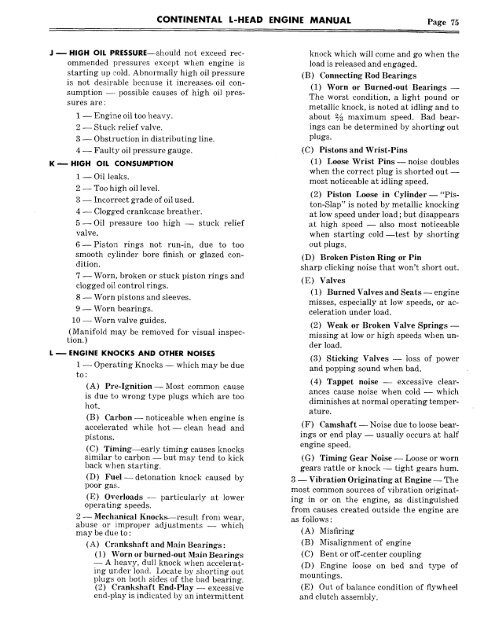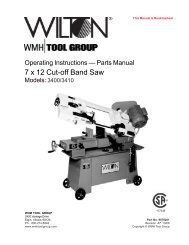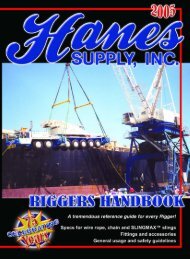Continental L-Head Overhaul Manual - Igor Chudov
Continental L-Head Overhaul Manual - Igor Chudov
Continental L-Head Overhaul Manual - Igor Chudov
Create successful ePaper yourself
Turn your PDF publications into a flip-book with our unique Google optimized e-Paper software.
J m HIGH OIL PRESSURE--should not exceed recommended<br />
pressures except when engine is<br />
starting up cold. Abnormally high oil pressure<br />
is not desirable because it increases, oil consumption<br />
--- possible causes of high oil pressures<br />
are :<br />
1 -- Engine oil too heavy.<br />
2 -- Stuck relief valve.<br />
3 -- Obstruction in distributing line.<br />
4 -- Faulty oil pressure gauge.<br />
K ~ HIGH OIL CONSUMPTION<br />
1 -- Oil leaks.<br />
2 -- Too high oil level.<br />
3 -- Incorrect grade of oil used.<br />
4 -- Clog~:ed crankcase breather.<br />
5--Oil pressure too high -- stuck relief<br />
valve.<br />
6--Pisto~a rings not run-in, due to too<br />
smooth cylinder bore finish or glazed condition.<br />
7 -- Worn, broken or stuck piston rings and<br />
clogged oil control rings.<br />
8 -- Worn pistons and sleeves.<br />
9 -- Worn bearings.<br />
10 -- Worn valve guides.<br />
(Manifold may be removed for visual inspection.)<br />
L m ENGINE KNOCKS AND OTHER NOISES<br />
1 -- Operating Knocks -- which may be due<br />
to:<br />
(A) Pre-Ignition--Most common cause<br />
is due to wrong type plugs which are too<br />
hot.<br />
(B) Carbon -- noticeable when engine<br />
accelerated while hot--clean head and<br />
pistons.<br />
CONTINENTAL L-HEAD ENGINE MANUAL Page 75<br />
(C) Timing--early timing causes knocks<br />
similar to carbon -- but may tend to kick<br />
back when starting.<br />
(D) Fuel--detonation knock caused<br />
poor gas.<br />
(E) Overloads -- particularly at lower<br />
operating speeds.<br />
2 -- Mechanical Knocks-~result from wear,<br />
abuse or i.mproper adjustments -- which<br />
may be due to :<br />
(A) Crankshaft and Main Bearings:<br />
(1) Worn or burned-out Main Bearings<br />
--A heavy, dull knock when accelerating<br />
urtder load. Locate by shorting out<br />
plugs on both sides of the bad bearing.<br />
(2) Crankshaft End-Play-- excessive<br />
end-play is indicated by an intermittent<br />
knock which will come and go when the<br />
load is released and engaged.<br />
(B) Connecting Rod Bearings<br />
(1) Worn or Burned-out Bearings --<br />
The worst condition, a light pound or<br />
metallic knock, is noted at idling and to<br />
about 2~ maximum speed. Bad bearings<br />
can be determined by shorting out<br />
plugs.<br />
(C) Pistons and Wrist-Pins<br />
(1) Loose Wrist Pins--noise doubles<br />
when the correct plug is shorted out -most<br />
noticeable at idling speed.<br />
(2) Piston Loose in Cylinder--"Piston-Slap"<br />
is noted by metallic knocking<br />
at low speed under load ; but disappears<br />
at high speed -- also most noticeable<br />
when starting cold--test by shorting<br />
out plugs.<br />
(D) Broken Piston Ring or Pin<br />
sharp clicking noise that won’t short out.<br />
(E) Valves<br />
(1) Burned Valves and Seats -- engine<br />
misses, especially at low speeds, or acceleration<br />
under load.<br />
(2) Weak or Broken Valve Springs -missing<br />
at low or high speeds when under<br />
load.<br />
(3) Sticking Valves -- loss of power<br />
and popping sound when bad.<br />
(4) Tappet noise -- excesgive clearances<br />
cause noise when cold -- which<br />
diminishes at normal operating temperature.<br />
(F) Camshaft -- Noise due to loose bearings<br />
or end play -- usually occurs at half<br />
engine speed.<br />
(G) Timing Gear Noise -- Loose or worn<br />
gears rattle or knock -- tight gears hum.<br />
3 -- Vibration Originating at Engine -- The<br />
most common sources of vibration originating<br />
in or on the engine, as distinguished<br />
from causes created outside the engine are<br />
as follows :<br />
(A) Misfiring<br />
(B) Misalignment of engine<br />
(C) Bent or off-center coupling<br />
(D) Engine loose on bed and type<br />
mountings.<br />
(E) Out of balance condition of flywheel<br />
and clutch assembly.
















